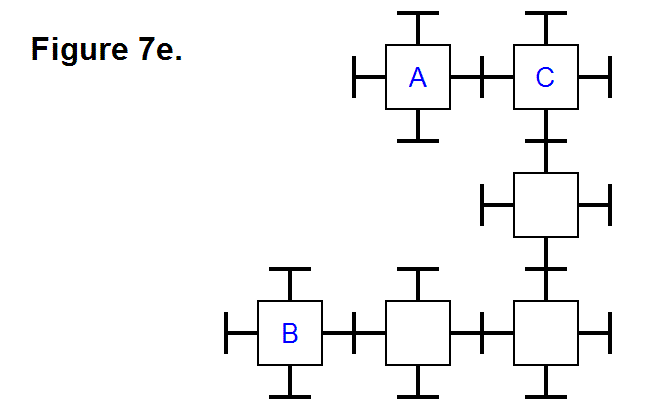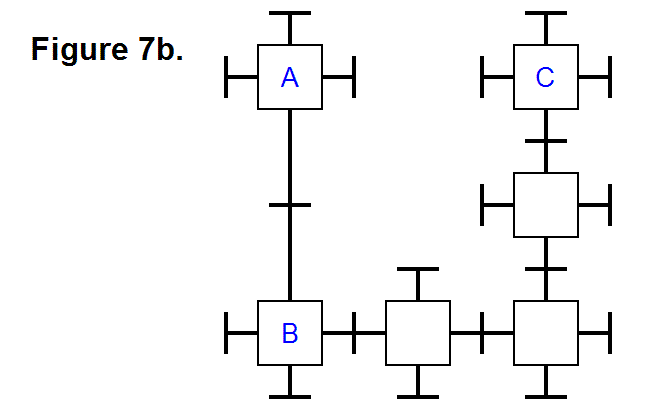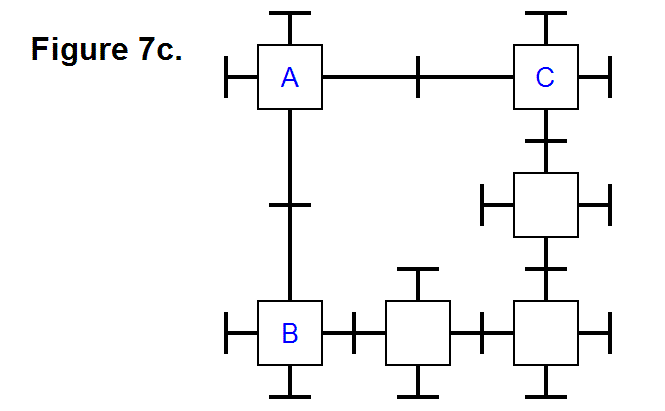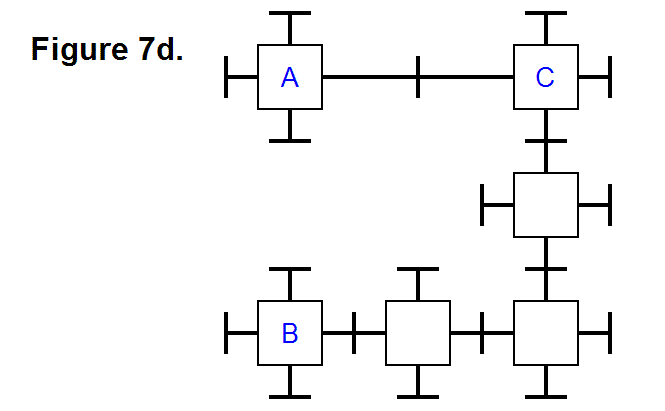DIAGONAL LATTICE RECONFIGURATION USING LEG EXTENDING CAPABILITIES
This type of modular self-reconfigurable system is capable of lattice based transformations to change its shape by using the leg extending and retracting feature. Figure 7a shows a matrix consisting of a column on the left with 2 modules which is connected to another module in the middle column on the bottom row, and it is connected to the bottom of a column of 3 modules on the right. The following example shows how the modules in this matrix can translate a module to move it both horizontally and vertically.
Figure 7b shows the first transition state of the matrix given in Figure 7a. It involves extending the legs between modules A and B to translate module A vertically.

Figure 7c shows modules A and C extending legs between them and joining them together.
Figure 7d shows modules A and B disconnecting from each other and retracting the legs between them.
Figure 7e shows the legs between modules A and C retracting to translate module A horizontally.
Module A has now been translated out of the first column into the second column and out of the second row into the first row, and this was accomplished using only lattice transitions. In a similar matrix arrangement, the same type of goal could have been accomplished by first extending the legs of the two middle row modules to join, then disconnecting the legs between modules A and B, then shortening the legs that join module A to the module in the column of modules on the right to translate module A to the second column, then connecting the leg from module A to the module in the middle column and bottom row, then disconnecting the legs that join module A to the module in the column on the right, then extending the legs that join module A to the module in the bottom row to translate module A to the top row, then connecting the legs between modules A and C, then finally disconnecting and retracting the legs between module A and the module in the bottom row.
